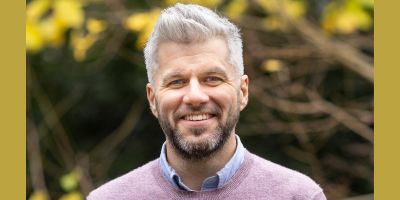Amazon inhales more carbon than it emits
A new study led by NASA and co-authored by Professor Emanuel Gloor has confirmed that natural forests in the Amazon remove more carbon dioxide from the atmosphere than they emit.
This finding resolves a long-standing debate about a key component of the overall carbon balance of the Amazon basin.
“The study is the first to characterize forest disturbances across all spatial scales from a few square metres to hundreds of hectares across the entire Amazon,” according to co-author Professor Emanuel Gloor of the University of Leeds, who jointly led the study.
The Amazon's carbon balance is a matter of life and death: living trees take carbon dioxide out of the air as they grow, and dead trees put the greenhouse gas back into the air as they decompose. The new study, published today in Nature Communications, is the first to measure tree deaths caused by natural processes throughout the Amazon forest, even in remote areas where no data have been collected at ground level.
Fernando Espírito-Santo of NASA’s Jet Propulsion Laboratory, California, and Emanuel Gloor created new techniques to analyse satellite, LIDAR data and a 20-year set of measurements collected by hundreds of scientists in the RAINFOR network, led by Professor Oliver Phillips at Leeds.
To compare this with Amazon carbon absorption, the researchers used censuses of forest growth and different modeling scenarios that accounted for uncertainties in the censuses. In every scenario, carbon absorption by living trees outweighed emissions from the dead ones, indicating that the prevailing effect in natural forests of the Amazon is absorption. Until now, scientists had only been able to estimate the Amazon's carbon balance from limited observations in small forest areas. In most of these permanent plots, the forest removes more carbon than it emits, but the scientific community has been vigorously debating how well the plots represent all the natural processes in the huge Amazon region. That debate began with the discovery in the 1990s that large areas of the forest can be killed off by intense storms in events called blowdowns.
Correlating satellite and airborne-instrument data with ground observations, Espírito-Santo and his colleagues devised methods to identify dead trees in different types of remotely sensed images. For example, fallen trees create a gap in the forest canopy that can be measured by lidar on research aircraft, and dead wood changes the colours in a satellite optical image. The researchers then scaled up their techniques so they could be applied to satellite and airborne data for parts of the Amazon with no corresponding ground data.
"We found that large natural disturbances – the sort not captured by plots – have only a tiny effect on carbon cycling throughout the Amazon," said Sassan Saatchi of JPL, also a co-author. Each year, about 2% of the entire Amazon forest dies of natural causes. The researchers found that only about one in a thousand of those deaths are caused by blowdowns.
This study looked only at natural processes in Amazonia, not at the results of human activities such as logging and deforestation, which vary widely and rapidly with changing political and social conditions.
“The new study from space and aircraft verifies the surprising discovery made from the ground - intact forest in the Amazon has been soaking up half a ton of carbon per hectare every year”, said Phillips. “This ‘carbon banking’ by forests has helped us all, by slowing climate change. Whether or not this subsidy from nature continues depends on several factors, including tropical deforestation and climate change itself.”
Further information
To interview Professor Emanuel Gloor please contact Emanuel Gloor, School of Geography, University of Leeds by email, eugloor(at)gmail.com
To interview Professor Oliver Phillips please contact Sarah Reed, Press Officer, University of Leeds on 0113 34 34196 or email s.j.reed(at)leeds.ac.uk
The research paper, ‘Size and frequency of natural forest disturbances and the Amazon forest carbon balance’, was published in the journal Nature Communications on 18 March 2014.




